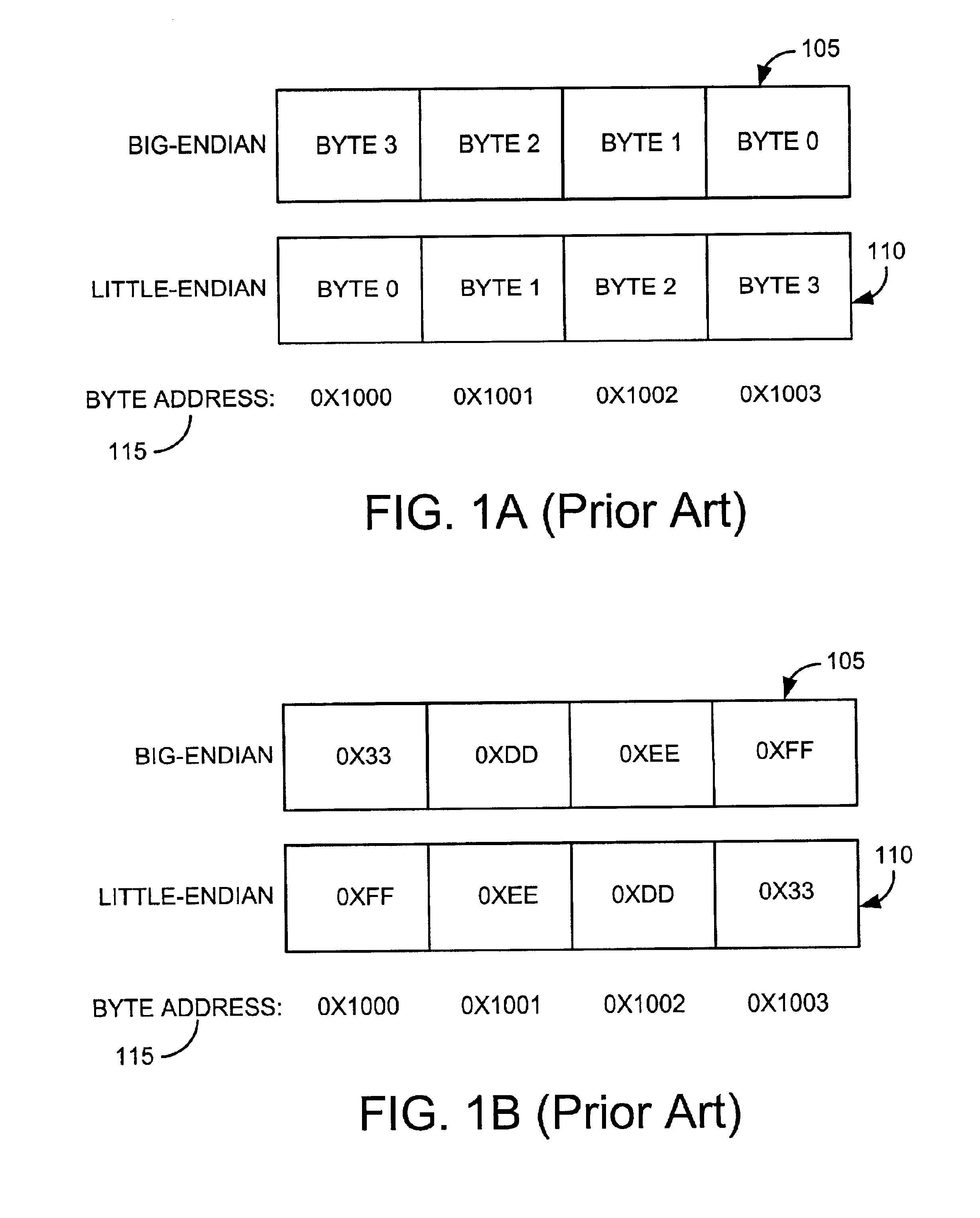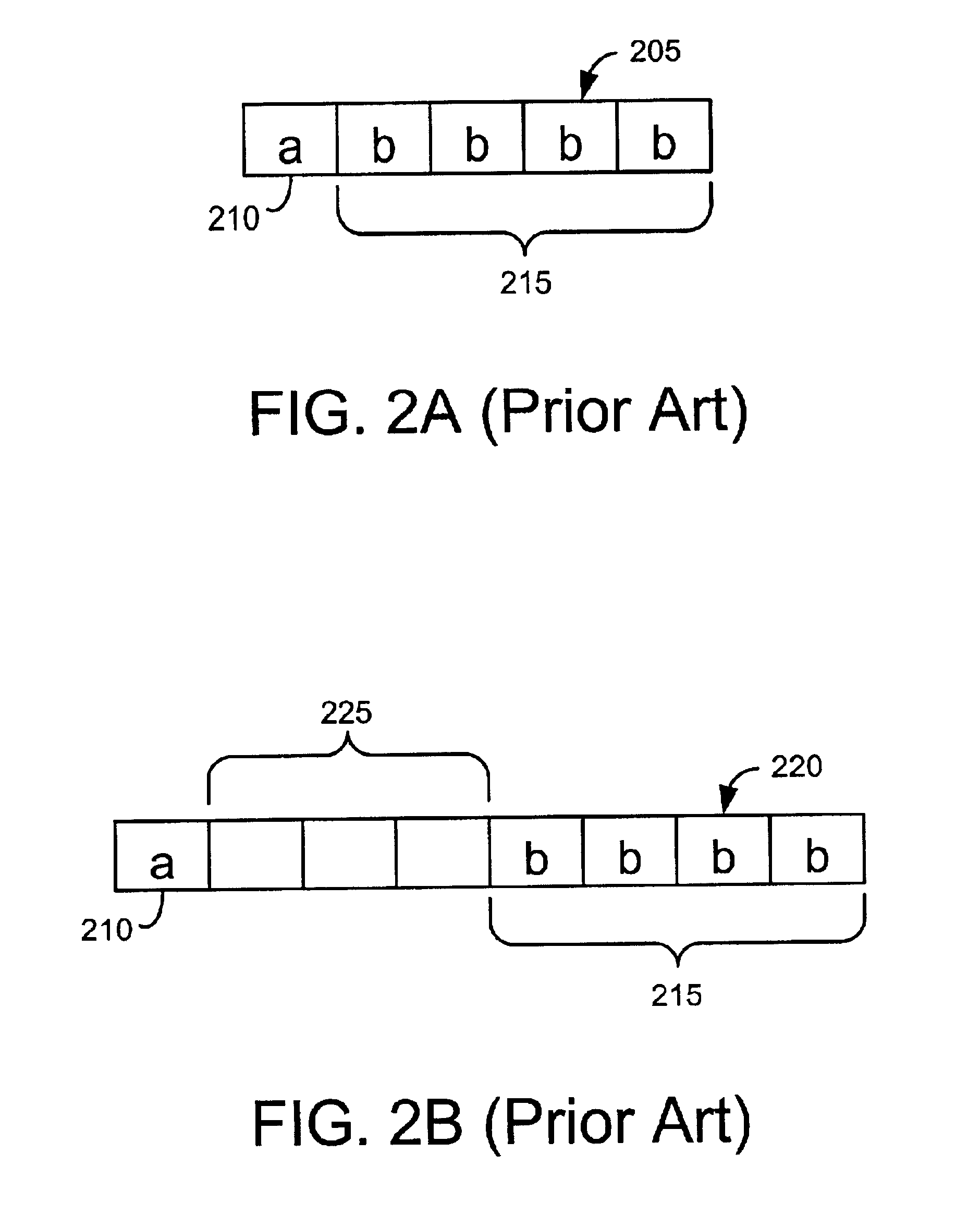Method for transferring a packed data structure to an unpacked data structure by copying the packed data using pointer
a data structure and data transfer technology, applied in the computer field, can solve problems such as compiler support and fatal run-time exceptions
- Summary
- Abstract
- Description
- Claims
- Application Information
AI Technical Summary
Problems solved by technology
Method used
Image
Examples
Embodiment Construction
The invention will be described in the context of pre-processing ACPI tables for use by a big-endian operating system. However, the invention may be applied to any data collection stored in little-endian format for which unpacking, byte swapping, bit reversal, or a combination thereof are required to prepare the data collection for use by a big-endian operating system. Before the invention is described in detail, several key concepts will first be defined and explained.
FIG. 1A and FIG. 1B show the difference between the little-endian and big-endian data storage conventions and clarify the byte swapping aspect of the invention. As shown in FIG. 1A, the bytes comprising, for example, 32-bit word 105 stored in big-endian format are opposite in order of corresponding 32-bit word 110 stored in little-endian format. Byte addresses 115 indicate the order in which bytes are stored physically in memory. In both representations, “Byte 3” is the most significant byte in the word. FIG. 1B shows...
PUM
 Login to View More
Login to View More Abstract
Description
Claims
Application Information
 Login to View More
Login to View More - R&D
- Intellectual Property
- Life Sciences
- Materials
- Tech Scout
- Unparalleled Data Quality
- Higher Quality Content
- 60% Fewer Hallucinations
Browse by: Latest US Patents, China's latest patents, Technical Efficacy Thesaurus, Application Domain, Technology Topic, Popular Technical Reports.
© 2025 PatSnap. All rights reserved.Legal|Privacy policy|Modern Slavery Act Transparency Statement|Sitemap|About US| Contact US: help@patsnap.com



